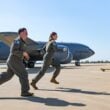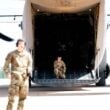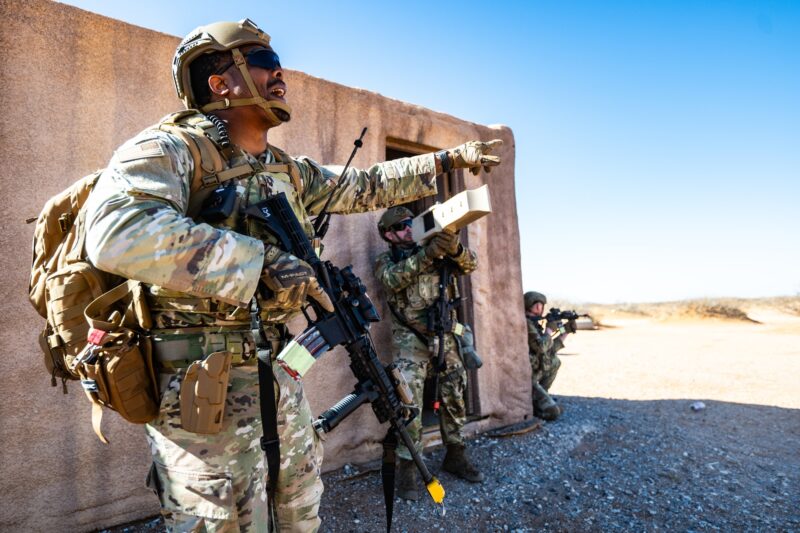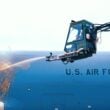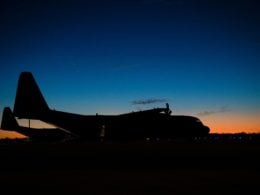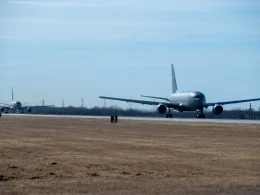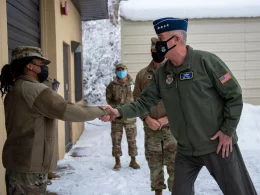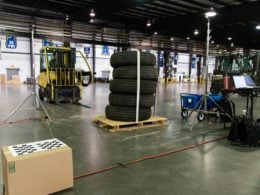FORT BLISS, Texas —
Airmen from the 12th Air Task Force, stationed at Scott Air Force Base, Illinois, recently wrapped up a rigorous training exercise at Fort Bliss, Texas, and Camp McGregor, New Mexico, from January 5 to 19. The exercise was a vital part of the Air Force’s ongoing effort to adapt and enhance readiness for future global competition.
The 12th Combat Air Base Squadron, along with personnel from Scott, Langley, Little Rock, and Barksdale Air Force Bases, gathered to refine essential combat and deployment skills needed for operations in austere environments. The 12th CABS plays a crucial role in training multi-capable Airmen, with a strong emphasis on preparing them for modern combat scenarios.
Throughout the training, over 300 Airmen participated in hands-on sessions covering combat support skills like aircraft cargo handling, base security, and rapid infrastructure repairs, with a special emphasis on countering modern threats like drone attacks. The 12th ATF marked a significant milestone by integrating multiple Counter-Unmanned Aircraft Systems in a practical scenario for the first time. This advanced system is designed to detect, track, and neutralize unauthorized or hostile drones, which have become a growing concern in modern warfare due to their versatility and potential to disrupt operations. As near-peer adversaries increasingly deploy unmanned aerial systems in the GPC terrain, developing these capabilities is critical for maintaining a strategic advantage in combat.
“Integrating Counter-UAS into our training and exercises allows us to keep pace with evolving threats in the current, dynamic threat environment,” said Lt. Col Jonathan Hoeffing, 12 ATF deputy commander. “By operating these systems in real-world conditions, we’re ensuring that the 12 ATF is able to sustain security and operational effectiveness while overcoming the challenges posed by unmanned aerial systems.”
The 12th ATF also received critical support from the Army’s 2nd Battalion, 363rd Training Support Battalion, known as Task Force Black Scorpion. This partnership enhanced the realism of the training, as Task Force Black Scorpion instructors simulated a variety of enemy tactics, including drone strikes and indirect fire, while also acting as opposing forces during combat exercises.
Major Jeff Brooks, Task Force Black Scorpion lead planner and Officer in Charge, added, “We aim to create scenarios that closely mirror what Airmen could encounter in deployed environments. By integrating our efforts with the Air Force, we are able to provide a comprehensive training experience, allowing Airmen to practice critical responses in a realistic, high-pressure environment. It’s all about preparing them for the complexities of modern warfare, where joint service operations and unpredictable threats are the norm. Our desire is to increase the survivability and lethality of deploying Airmen.”
The training scenarios crafted by Task Force Black Scorpion are designed not only to challenge Airmen, but to foster the teamwork and adaptability essential for success in real-world deployments. As Airmen face high-pressure environments, they are refining their tactical skills and gaining a deeper understanding of how their individual roles contribute to mission success.
“We constantly hear the phrase ‘Mission Ready Airman’ and exercises like this are where we really become ‘mission-ready’. This exercise has been invaluable in strengthening our teamwork and operational readiness,”
Major De’Angela Sword, 12th CABS director of operations
“We constantly hear the phrase ‘Mission Ready Airman’ and exercises like this are where we really become ‘mission-ready’. This exercise has been invaluable in strengthening our teamwork and operational readiness,” said Major De’Angela Sword, 12th CABS director of operations. “We’re walking away with a deeper understanding of how our individual roles fit into the larger mission. And the lessons we’ve learned here will have a direct impact on our ability to respond rapidly and effectively.”
As the Air Force adapts to emerging global threats, exercises like this ensure the 12th ATF remains ready to meet any challenge, anywhere, at a moment’s notice. By providing hands-on training in critical areas like counter-drone operations, base security, and rapid repairs, these exercises produce mission-capable Airmen who are adaptable to the complexities of modern warfare. This readiness gives the 12th ATF a competitive edge in the Global Power Competition, helping the U.S. Air Force maintain superiority in an increasingly combative and technology-driven battlefield.


